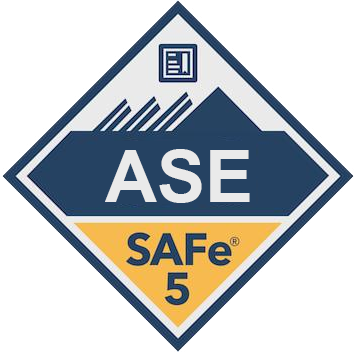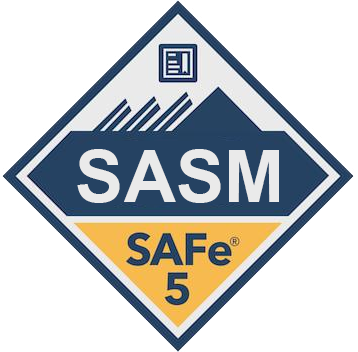The concept of continuous quality improvement within Agile teams.
Understanding Continuous Quality Improvement in Agile Teams
Introduction: Continuous Quality Improvement (CQI) is a cornerstone of Agile methodology, reflecting the commitment to ongoing refinement and enhancement of processes and outcomes. In Agile teams, CQI is not merely a practice but a guiding principle that drives iterative development cycles and fosters a culture of excellence. This article delves into the concept of continuous quality improvement within Agile teams, exploring its significance, principles, and practical implications.
- The Significance of Continuous Quality Improvement in Agile:
- Definition of CQI in the context of Agile methodology.
- Highlighting the importance of CQI as a means to deliver value continuously.
- Emphasizing the role of CQI in addressing evolving customer needs and market dynamics.
- Illustrating how CQI aligns with Agile principles such as customer collaboration, responding to change, and delivering working software incrementally.
- Definition of CQI in the context of Agile methodology.
- Principles of Continuous Quality Improvement in Agile:
- Iterative refinement: Embracing the iterative nature of Agile development to continuously improve processes and deliverables.
- Customer focus: Prioritizing customer satisfaction and feedback loops to drive quality enhancements.
- Transparency and feedback: Promoting transparency and open communication to gather feedback and insights for improvement.
- Empirical process control: Embracing empirical data and experimentation to inform decision-making and drive improvement efforts.
- Iterative refinement: Embracing the iterative nature of Agile development to continuously improve processes and deliverables.
- Practices and Techniques for Continuous Quality Improvement in Agile Teams:
- Conducting regular retrospectives: Reflecting on past iterations to identify successes, challenges, and areas for improvement.
- Implementing incremental changes: Iteratively introducing enhancements based on feedback and data-driven insights.
- Embracing a culture of experimentation: Encouraging teams to experiment with new practices and technologies to drive innovation and improvement.
- Prioritizing quality throughout the development process: Integrating quality assurance practices, such as automated testing and code reviews, into every stage of development.
- Conducting regular retrospectives: Reflecting on past iterations to identify successes, challenges, and areas for improvement.
- Challenges and Considerations in Continuous Quality Improvement:
- Balancing speed and quality: Addressing the tension between delivering quickly and ensuring high-quality outcomes.
- Overcoming resistance to change: Navigating cultural barriers and resistance to adopting new practices or embracing feedback.
- Managing complexity: Dealing with the complexity inherent in Agile projects and ensuring that CQI efforts are focused and impactful.
- Balancing speed and quality: Addressing the tension between delivering quickly and ensuring high-quality outcomes.
Conclusion: Continuous Quality Improvement is not just a practice but a mindset that underpins Agile methodology. By embracing the principles of CQI and integrating data-driven approaches, Agile teams can continuously refine their processes, deliver high-quality products, and meet the evolving needs of their customers. Through a commitment to transparency, feedback, and experimentation, Agile teams can foster a culture of continuous improvement that drives success in today’s dynamic and competitive landscape.
The importance of collecting and analyzing data to identify trends, defects, and opportunities for improvement.
Continuous Quality Improvement (CQI) in Agile projects relies heavily on data-driven approaches to identify trends, detect defects, and uncover opportunities for enhancement. This article delves into the significance of collecting and analyzing data within Agile teams to drive continuous improvement efforts. By leveraging data effectively, Agile teams can make informed decisions, optimize processes, and deliver high-quality products that meet or exceed customer expectations.
- Importance of Data Collection in Agile Projects:
- Data as a foundation for informed decision-making: Highlighting the role of data in guiding project direction and priorities.
- Types of data sources: Exploring various data streams such as user feedback, performance metrics, defect logs, and customer satisfaction surveys.
- Real-time insights: Discuss the value of collecting data continuously to monitor project health and identify issues as they arise.
- Enabling evidence-based improvements: Demonstrating how data-driven insights empower Agile teams to make targeted improvements based on factual evidence rather than assumptions.
- Data as a foundation for informed decision-making: Highlighting the role of data in guiding project direction and priorities.
- Analyzing Data to Identify Trends, Defects, and Opportunities:
- Trend analysis: Using historical data to identify patterns and predict future outcomes, enabling proactive decision-making.
- Defect detection: Utilizing data to track and analyze defects, identify root causes, and implement corrective actions to prevent recurrence.
- Opportunity identification: Mining data for areas of potential improvement, such as bottlenecks in the development process, inefficient workflows, or gaps in product functionality.
- Quantifying impact: Measuring the effectiveness of improvement initiatives through data analysis, validating the success of implemented changes, and informing future strategies.
- Trend analysis: Using historical data to identify patterns and predict future outcomes, enabling proactive decision-making.
- Leveraging Data for Continuous Improvement Initiatives:
- Data-driven retrospectives: Incorporating data analysis into retrospective meetings to facilitate meaningful discussions and identify actionable insights for improvement.
- Establishing key performance indicators (KPIs): Defining measurable metrics aligned with project goals and quality standards to track progress and drive improvement efforts.
- Implementing feedback loops: Creating mechanisms to collect feedback from stakeholders, customers, and team members, and leveraging data to address identified areas for improvement.
- Agile experimentation: Using data-driven approaches to experiment with process changes, tools, and techniques, and iteratively refining practices based on observed outcomes.
- Data-driven retrospectives: Incorporating data analysis into retrospective meetings to facilitate meaningful discussions and identify actionable insights for improvement.
- Overcoming Challenges in Data-Driven Continuous Improvement:
- Data quality and accessibility: Addressing challenges related to data accuracy, completeness, and availability, and implementing strategies to ensure data integrity.
- Analytical skills and expertise: Investing in training and development to enhance team members’ data analysis capabilities and promote a data-driven culture.
- Balancing qualitative and quantitative data: Recognizing the value of both quantitative metrics and qualitative insights in driving improvement initiatives, and integrating diverse data sources for a comprehensive understanding.
- Data quality and accessibility: Addressing challenges related to data accuracy, completeness, and availability, and implementing strategies to ensure data integrity.
Conclusion: In Agile projects, continuous quality improvement hinges on the effective collection and analysis of data. By harnessing data to identify trends, detect defects, and uncover opportunities for improvement, Agile teams can enhance their processes, optimize performance, and deliver greater value to stakeholders. Embracing a data-driven approach empowers Agile teams to make evidence-based decisions, iterate rapidly, and maintain a competitive edge in today’s dynamic business environment.
Practical techniques and tools for implementing data-driven quality improvement in Agile projects.
Continuous Quality Improvement (CQI) in Agile projects relies on the effective utilization of data-driven techniques and tools to enhance processes and outcomes iteratively. This article focuses on sharing practical strategies and tools that Agile teams can leverage to implement a data-driven approach to quality improvement. By adopting these techniques, Agile teams can optimize their workflows, address defects, and capitalize on improvement opportunities, ultimately delivering higher value to stakeholders.
Establishing Key Performance Indicators (KPIs):
- Define relevant KPIs: Identify metrics that align with project goals, customer expectations, and quality standards.
- Quantifiable measures: Ensure KPIs are measurable and provide meaningful insights into project performance and quality.
- Tracking progress: Use tools such as dashboards and reporting systems to monitor KPIs in real-time and track progress over time.
- Examples of KPIs are velocity, defect density, cycle time, customer satisfaction scores, and test coverage.
Conducting Data-Driven Retrospectives:
- Gather relevant data: Collect data on project performance, team dynamics, and stakeholder feedback from sprint activities.
- Analyze trends and patterns: Use retrospective meetings to analyze data and identify recurring issues, successes, and improvement opportunities.
- Actionable insights: Encourage team collaboration to brainstorm solutions and prioritize actionable improvements based on data-driven insights.
- Iterative refinement: Continuously assess the effectiveness of implemented improvements and adjust strategies accordingly in subsequent retrospectives.
Implementing Automated Testing and Continuous Integration (CI):
- Automated testing: Integrate automated testing tools (e.g., Selenium, JUnit) into the development process to ensure code quality and detect defects early.
- Continuous Integration (CI): Utilize CI/CD pipelines to automate the build, testing, and deployment process, enabling frequent feedback and rapid iteration.
- Continuous feedback loop: Leverage CI to collect data on build success rates, test coverage, and code quality metrics, facilitating data-driven decision-making and continuous improvement.
Utilizing Data Visualization Tools:
- Visualizing project data: Use data visualization tools (e.g., Tableau, Grafana) to create informative dashboards and reports that provide insights into project health, performance, and quality.
- Communicating insights: Present data visually to stakeholders and team members, making complex information more accessible and actionable.
- Identifying trends: Visualize trends and patterns in project metrics, enabling teams to identify areas for improvement and track progress over time.
Integrating Feedback Loops:
- Collecting user feedback: Implement mechanisms to gather feedback from end-users, stakeholders, and team members throughout the development process.
- Analyzing feedback: Use data analysis techniques to analyze user feedback and identify recurring themes, pain points, and enhancement opportunities.
- Iterative improvements: Incorporate feedback into the development process iteratively, prioritizing changes based on data-driven insights and stakeholder input.
Conclusion: By adopting practical techniques and leveraging appropriate tools, Agile teams can implement a data-driven approach to quality improvement effectively. Establishing KPIs, conducting data-driven retrospectives, implementing automated testing and CI, utilizing data visualization tools, and integrating feedback loops are essential strategies for driving continuous improvement in Agile projects. By embracing a data-driven mindset and culture, Agile teams can enhance their processes, optimize performance, and deliver higher-quality products that meet the evolving needs of stakeholders.
For more posts like this follow Agile Digest social Pages or subscribe our newsletter:
Wesbite: https://agiledigest.com/
Facebook: https://www.facebook.com/agiledigest/
LinkedIn: https://www.linkedin.com/company/agiledigest/
Youtube: https://www.youtube.com/@AgileDigest
Log into Facebook to start sharing and connecting with your friends, family, and people you know.








































































